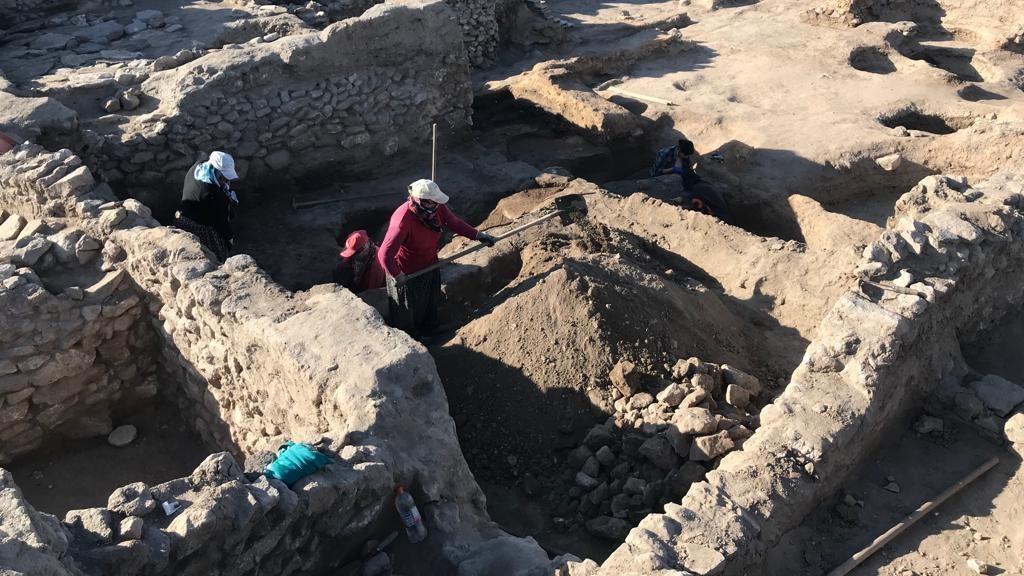
A 4,300-year-old braided mat has been found in the Kültepe Kaniş Karum Ruins, which dates back 6,000 years in Central Anatolia and is home to the first written tablets of Anatolia.
The head of the excavations, Ankara University Department of Archeology Professor Fikri Kulakoğlu said, “This year, a mat was found in situ, that is, in its original place. Of course, wicker is an element made of reeds and it is not possible for it to survive for such a long period of time. Anyway, we are now trying to remove traces of it, almost like dust. If we can remove it, we plan to exhibit it at a museum. It will be the first of its kind.”
The Kültepe Kaniş Karum Ruins, where the first written tablets of Anatolia were found, is 24 kilometers away from the city center. The Kültepe Ruins, which consists of a mound - the remains of the first city founded by the Hittites in Anatolia - and the karum (trade center) surrounding it, has, administrative buildings, religious buildings, houses, shops and workshop ruins.
The excavations, restoration and inventory work that have been continuing in the ruins since 1948 make Kültepe one of the important tourism centers of Türkiye. A 4,300-year-old braided mat was found during the excavations in the 75th year. Work has begun to unearth the mat.
"The excavations continue mainly on the hill as well as in the area we call 'Lower City' or 'Karum.' From now on, we will continue as long as the weather allows. But we can continue for one more month at most," Kulakoğlu said.
Stating that they found important artifacts this year, Kulakoğlu said, "We worked in many different sectors and fields in this year's work. Our latest excavation area is an area of large monumental buildings from 4,250-4,300 years ago. We have been here since 2017. We are trying to finish the excavation of the building. Last year, in the place where we are currently excavating, we opened an idol room, the plan of which is now becoming clear, and a structure that should have been a sacred room, containing more than 100 idols and figurines.”
Kulakoğlu said that they are searching the continuation of the structure, and added, “Similar to what we found last year, we find idols and figurines in the next room. In addition, the imported materials, which we call 'Kernos,' similar to the round bagel-shaped containers, are found, too. This year, we found a mat. If we can remove it, we plan to exhibit it in a museum as a beautiful example. These are not a new find; there are similar examples in Kültepe or other places. But this is the first time we see an example with such a beautiful texture and clear weaving pattern. This mat even has a tassel. Let's see what we will find in other parts of the room.”
Kulakoğlu emphasized the importance of wicker as a beautiful example in the aesthetic sense, saying, “In fact, such organic materials cannot always survive that long. But in this example, traces are a little thicker and a little deeper. These are ash materials that almost disappear as soon as you touch them. But our team found it well while digging. It was possible to see its texture, its tassel, and its very fine fibers. Its thickness is currently 2-3 millimeters. But it is important in terms of weaving.”